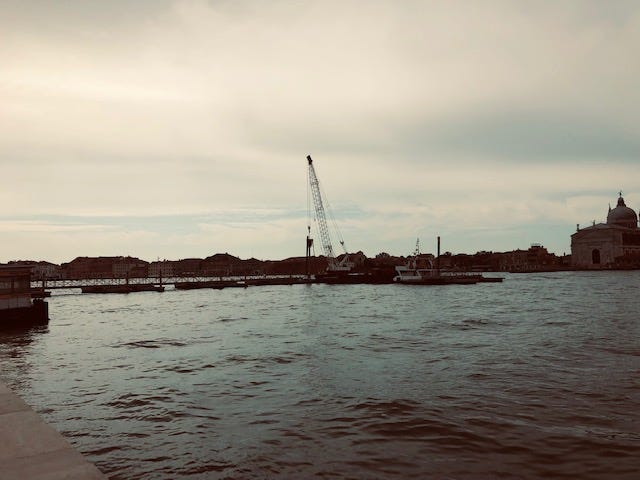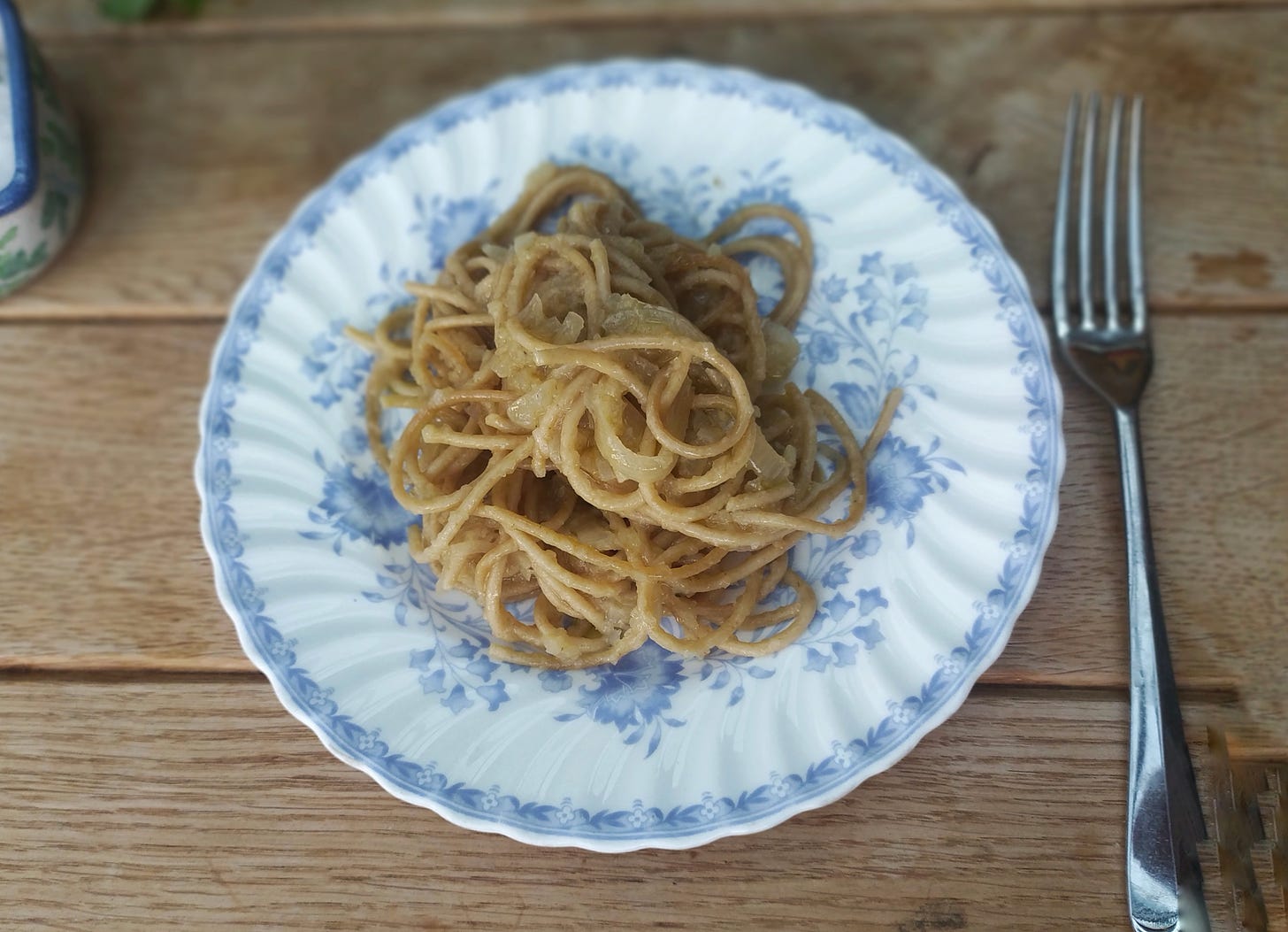Whilst Carnival has declined into a sorry tourist parody ( see our earlier newsletter, Carnival Sins), Redentore is the festival for which Venetians push the boat out in every sense. The celebrations commemorate the delivery of the city from the plague in 1575, when 50 000 people- then a third of the Venetian population, now its totality- died in two years. The most famous victim was Titian, who at least enjoyed the posthumous honour of a tomb in the Frari. In 1576, the Senate ordered a new church to be built in honour of Christ the Redeemer on Giudecca, and declared an annual pilgrimage of thanksgiving. Palladio’s joyful symphony in stone and light was completed the following year and a bridge of boats was strung together over the 330 metres of the Giudecca canal to allow citizens to cross over and pay their respects.
The 1575 plague saw the introduction of what became one of the best known and sinister symbols of Venice, the beaked mask of the Plague doctor. The spooky proboscis was stuffed with herbs or a sponge soaked in vinegar to ward off the “miasma” which was believed to carry the disease. The Redentore bridge is made of pontoons these days, but otherwise the tradition of High Mass served by the Patriarch followed by an embarkation of boats into the Bacino San Marco at sunset for feasting and fireworks has endured pretty much unchanged.
This year’s Redentore bridge under construction-Thursday morning
We feel particularly proud as the third Saturday in July comes round as the bridge is constructed exactly at the top of Sugar Street. We’re not such big fans of bobbing about in the bacino for five hours. Lovely in principle, agonising in practice (no loos). But every altana in the city is filled with coloured lights for the fireworks, which is a far more dignified alternative. Staying up all night is de rigueur for the younger set, with parties on the Lido and a dawn swim for the survivors.
The Redentore dinner begins with sardines in saor, which were already traditional by the eighteenth century (Goldoni wrote a poem about them) and bovoleti, the tiny snails cooked in broth and white pepper which are fascinatingly similar to those scooped out from giant cauldrons in Marrakech. Pasta with beans or bigoli in sauce are the obligatory primo choices, whilst the main course has to be duck, stuffed with a mix of salami, pork, its own heart and liver, rosemary and Parmesan. Pudding is watermelon, kept cool in the waters of the lagoon. (In an echo of the ancient anti-plague talismans, the beaches are strewn with watermelon husks carved into cheerful little monsters the next morning.)
We’re not even thinking about duck stuffed with salami (Just. Too. Hot.), but our watermelon gazpacho is a light, savoury opener, somewhere between a soup and a granita and a sophisticated prelude to the homely bigoli in salsa. This could be a lovely dinner for a summer’s evening even without the fireworks- perhaps drape a few fairy lights around the garden, like the Venetians do on their boats.
WATERMELON GRANITA GAZPACHO with LIME AND HOT CROUTONS
The key to this recipe and the reason you might take the extra time to make it is the mix of textures and temperatures making the whole thing quite memorable.
We suggest watermelon gazpacho but if you happen to have made normal (and delicious) ordinary tomato gazpacho the recipe will still work all the same.
Watermelon and Tomato Gazpacho (to be made a day in advance and stored in the freezer):
1kg ripe san Marzano tomatoes (about 12), peeled and roughly chopped
2 cloves garlic, peeled and roughly chopped
6 celery stalks, pale parts and leaves, all roughly chopped
1 small onion, roughly chopped
500g watermelon flesh, seeds removed
100g crustless white bread, broken into small chunks
150ml tomato passata (or tomato pulp)
Handul Basil Leaves
juice)
2 tbsp red wine vinegar
200ml olive oil, plus extra for drizzling
Pesto:
2 large handfuls of spinach leaves
1 large handul of mint leaves
1/2 cetriolo (chopped roughly)
1 Lime juice
100 gr of Frozen Peas (important to create creamy texture)
Olive oil
2 tbsp of white wine vinegar
Hot Oil Croutons:
crouton (material: stale bread or bought croutons)
Olive oil
Cayenne Pepper
Bring a pan of water to the boil. Whilst waiting score all the tomatoes with a cross on top to make them easier to peel. Prepare a bowl of ice-cold water next to the boiling pot. Add the scored tomatoes in batches to the boiling water and watch as the skin starts to come away at the cuts. This needs no more than 1 minute. Then transfer them quickly to the ice water before adding the next batch. When all tomatoes have been blanched, peel the skin and add to the blender. Mix all ingredients together, adding more olive oil if needed. At this point, the gazpacho is ready if you want to serve it like this. If you want to make granita, read on
Granita: freeze the gazpacho in a low walled container overnight, occasionally breaking it up with a fork but don’t worry too much.
Just before you are ready to serve start to prepare the pesto. Again in a blender add all the ingredients, adding the olive oil slowly. Doesn’t need to be completely smooth.
The final step is the oil croutons. Not as dangerous as they sound. These are there to add a textural element as well as deliciously flavour to your iced gazpacho. As you bite into them the oil mixes with the rest and it’s delicious. Heat 3 tbsps of olive oil in a pan with the croutons, a touch of salt and cayenne pepper.
Serve with the green pesto underneath, topped with granita, oil croutons and fresh cucumber
BIGOLI IN SALSA
Anna writes-Bigoli in Salsa has a weirdly comforting smell to me. I say weird only because despite the fact I didn’t try it until my early twenties, it is very homely. No need to get fancy here but take your time, enjoy the cooking process. Good for warm summer evenings as well as chilly winter ones. I am sure every Venetian household has grown up with a different ratio of onions to anchovies but here is ours. And although some people say that you can cook this dish relatively quickly, and you probably can, the best recipe I ever tasted took ages so I have always aired on the side of caution ever since.
Ingredients:
serves 4
6-10 onions depending on size (white onions)
7-8 anchovies including some oil if they are oil packed ones. Saltpacked tend to be slightly stronger so use 6-7 in that case.
600gr bigoli
1/2 cup white wine
2 cups (maybe a bit more) water added gradually
Thinly slice the onions and add them to a large frying pan with a small amount of anchovy oil. Pan fry them but do not let them get colour. You want them to always be softening without caramelising. Soften them for about 5 minutes with just olive oil, then add the wine and continue to stir, once this has gone add some water, stir some more and then cover with a lid. Keep stirring occasionally, add more water or wine when necessary. This stage can go for as long as you like, but at least an hour. Keep cooking until the onions have melted away practically and then add the anchovies and break them down into the onions. At this point, the sauce will probably be ready in about 10 minutes, but it won’t hurt to keep it going longer. Cook the pasta as you would normally but in slightly less salted water, reserving some of the cooking liquid. Once cooked, add all the pasta to the onions, add the final glug of olive oil, salt and pepper and serve (parsley is nice but not necessary, I also recently tried dill and liked it). Purists say that you should not be able to see even one slice of onion, I obviously have not completely abided by this but the majority of your onions should be sauce-like.






